In a world where sustainability is no longer a buzzword but a critical necessity, the quest to recycle has expanded far beyond the realm of paper, plastic, and glass.
Yet, amidst the myriad of items we diligently separate for recycling, one often overlooked hero of the kitchen remains in the shadows: the trusty frying pan.
As we embark on a journey to uncover the fate of these culinary companions, we delve into the depths of recycling wisdom, questioning whether these seasoned tools of gastronomic delight can find new life beyond the sizzle of the stove.
So, grab your spatula and join us as we explore the tantalizing world of frying pan recycling – where culinary innovation meets environmental stewardship.
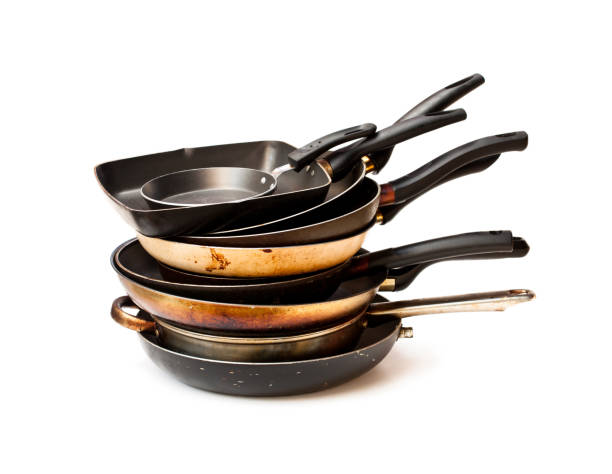
Can You Recycle Frying Pans
Yes, you can recycle a frying pan. Frying pans are typically made of materials like aluminum, stainless steel, or cast iron, which are all recyclable.
However, before recycling, it’s essential to ensure that the pan is clean and free of any food residue or oils. This can usually be achieved by soaking the pan in hot, soapy water and scrubbing it with a non-abrasive sponge or brush.
If the pan has any non-metal components such as plastic or wooden handles, these should be removed before recycling. Once the pan is clean and stripped of any non-metal parts, it can be placed in the recycling bin along with other metal items.
Recycling frying pans helps conserve natural resources and reduces the environmental impact of producing new metal goods.
3 Tips Before Recycling Your Pans
Before recycling your pans, here are three important tips to keep in mind:
Identify The Materials In Your Pan
Before recycling your pans, it’s essential to identify the materials they are made of. Most pans are typically made from materials such as aluminum, stainless steel, or cast iron.
However, some pans may have coatings or non-metallic components that could affect their recyclability. To identify the materials in your pan, you can check for any markings or labels indicating the type of metal used.
You can perform a simple magnet test to determine if the pan is magnetic, which would indicate the presence of ferrous metals like iron or steel. Once you have identified the materials, you can proceed with the appropriate recycling process based on the composition of your pan.
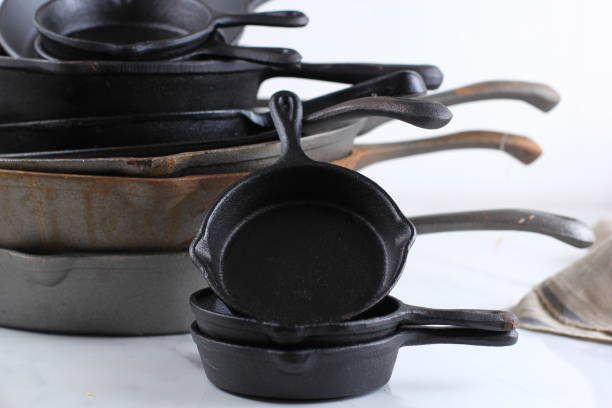
Sanitize Your Pans
Before recycling your pans, it’s important to sanitize them to ensure they are clean and safe for handling. Sanitizing the pans helps remove any food residue, grease, or bacteria that may be present, making them suitable for recycling.
To sanitize your pans, start by washing them with hot, soapy water and scrubbing them thoroughly with a sponge or brush. Pay close attention to any crevices or difficult-to-reach areas where food particles may be trapped.
After washing, rinse the pans with clean water to remove any soap residue. Next, you can sanitize the pans by either boiling them in water for a few minutes or using a sanitizing solution recommended for kitchen equipment.
Allow the pans to air dry completely before proceeding with recycling. Sanitizing your pans not only ensures they meet hygiene standards but also helps prevent contamination during the recycling process, ensuring that the materials can be recycled effectively.
Check For Local Recycling Centers
Before recycling your pans, it’s crucial to check for local recycling centers or facilities that accept metal items. Not all recycling programs may accept metal pans, or they may have specific guidelines for their disposal.
By researching local recycling options, you can ensure that your pans are recycled properly and efficiently. You can start by contacting your local waste management authority or visiting their website to find information about recycling centers in your area.
Some municipalities may have drop-off locations specifically for metal items, while others may offer curbside recycling programs for metal objects. You can inquire about any special instructions or requirements for recycling pans, such as whether they need to be separated from other recyclables or if there are restrictions on certain types of pans.
By checking for local recycling centers, you can make sure that your pans are disposed of in an environmentally responsible manner, contributing to recycling efforts in your community.
Products You Need for Restore Old Pans
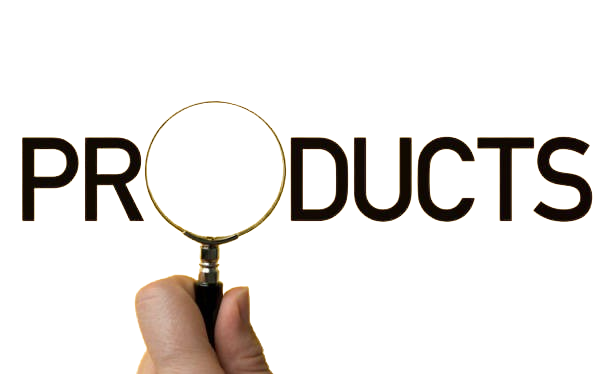
Restoring old pans can be a rewarding project, and there are several products that you may find useful for the task. Here are some items you may need:
- Steel Wool or Abrasive Scrubbers: Steel wool or abrasive scrubbers are essential for removing stubborn food residue, rust, and stains from old pans. They can help scrub away built-up grime without damaging the surface of the pan.
- Dish Soap or Degreaser: A good-quality dish soap or degreaser is necessary for cleaning the pans thoroughly. It helps to break down grease and oil, making it easier to remove residue from the surface of the pan.
- Baking Soda or Bar Keepers Friend: Baking soda or products like Bar Keepers Friend are effective for tackling tough stains and discoloration on old pans. They can be used as a gentle abrasive to scrub away stains and restore the shine to the pan’s surface.
- White Vinegar: White vinegar is a natural acid that can help remove rust and mineral deposits from old pans. You can soak the pans in a mixture of vinegar and water to help loosen stubborn stains and rust before scrubbing them clean.
- Metal Polish: Metal polish can be used to buff and shine the surface of the pan, giving it a like-new appearance. Choose a polish specifically designed for the type of metal your pan is made of, such as stainless steel or copper.
- Seasoning Oil (For Cast Iron Pans): If you’re restoring cast iron pans, you’ll need seasoning oil to season the pans after cleaning. Seasoning oil helps create a non-stick surface and prevents rusting on cast iron pans.
- Protective Gloves: Protective gloves can help protect your hands while cleaning and restoring old pans, especially if you’re using abrasive scrubbers or chemicals.
By having these products on hand, you’ll be well-equipped to tackle the task of restoring your old pans to their former glory. Remember to follow safety guidelines and manufacturer’s instructions when using cleaning products and abrasive materials.
Step By Step Process For Restoring An Old Pan:
Here’s a step-by-step process for restoring an old pan using the products mentioned:
- Assessment: Start by assessing the condition of the pan. Note any areas of rust, stubborn stains, or built-up grime that need attention.
- Cleaning: Fill the sink with hot water and add a few drops of dish soap or degreaser. Submerge the pan in the soapy water and let it soak for 15-30 minutes to loosen any grease or food residue. Use a sponge or soft-bristled brush to scrub the pan, paying special attention to any stubborn stains or burnt-on food. For particularly tough stains, sprinkle baking soda or Bar Keepers Friend onto the surface of the pan and scrub gently with steel wool or an abrasive scrubber.
- Rust Removal: If the pan has rust spots, mix equal parts white vinegar and water in a bowl or basin. Submerge the rusty areas of the pan in the vinegar solution and let it soak for several hours or overnight. After soaking, scrub the rust spots with steel wool or an abrasive scrubber until the rust is removed. Rinse the pan thoroughly with water and dry it completely.
- Polishing: If the pan is made of stainless steel or another metal that can be polished, apply a small amount of metal polish to a soft cloth or sponge. Buff the surface of the pan in circular motions, working in small sections until the entire pan is polished to your satisfaction. Follow the manufacturer’s instructions on the metal polish packaging for best results.
- Seasoning (For Cast Iron Pans): If you’re restoring a cast iron pan, it will need to be seasoned after cleaning. Preheat your oven to 350°F (175°C). Rub a thin layer of seasoning oil (such as vegetable oil or flaxseed oil) onto the surface of the pan, including the inside and outside. Use a paper towel to wipe off any excess oil. Place the pan upside down on the middle rack of the oven, with a sheet of aluminum foil on the bottom rack to catch any drips. Bake the pan for 1-2 hours, then turn off the oven and let the pan cool completely inside the oven before removing it.
- Final Inspection: Once the pan has been cleaned, polished, and seasoned (if necessary), give it a final inspection to ensure that it’s free of any remaining stains, rust, or residue. Rinse the pan with water and dry it thoroughly with a clean towel.
By following these steps and using the appropriate products, you can restore your old pan to its former glory and extend its lifespan for years to come.
Donate Your Old Pans
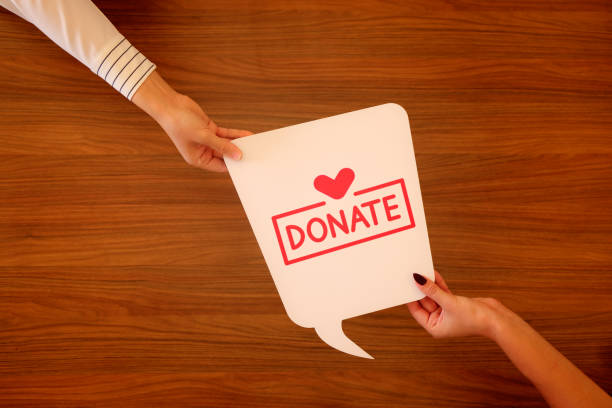
Donating your old pans can be a wonderful way to give back to your community and help those in need. Instead of letting your old pans collect dust in a cabinet or ending up in a landfill, donating them allows someone else to benefit from their use.
There are many organizations and charities that accept donations of kitchen items, including pans, to distribute to individuals and families in need. These organizations may include homeless shelters, food banks, community kitchens, or organizations that support refugees and immigrants.
By donating your old pans, you can help provide essential cooking tools to people who may not have the means to afford them otherwise, enabling them to prepare nutritious meals for themselves and their families.
Donating pans promotes sustainability by reducing waste and encourages a culture of sharing and generosity within the community. Before donating your pans, make sure they are clean and in good condition, free from any damage or excessive wear.
This ensures that they can be put to good use by their new owners and helps maintain the dignity of the recipients. Overall, donating your old pans is a simple yet impactful way to make a positive difference in the lives of others and contribute to a more caring and compassionate society.
Rehoming
Rehoming your old pans is a thoughtful and sustainable option that allows you to pass on items you no longer need to someone who can use them.
Whether you’re downsizing, upgrading, or simply decluttering your kitchen, rehoming your old pans gives them a new lease on life instead of sending them to the landfill. There are several ways to rehome your pans effectively.
One option is to offer them to friends or family members who may be in need of kitchenware. You could also consider posting them on online classifieds or community forums for free or at a low cost.
Another option is to donate them to local charities, shelters, or thrift stores that accept kitchen items. By rehoming your old pans, you not only reduce waste but also contribute to a more sustainable and sharing-oriented community.
Plus, knowing that your pans are being used and appreciated by someone else can bring a sense of satisfaction and fulfillment.
Use Your Pan In A DIY Or Arts And Crafts Project
Repurposing your old pan for a DIY or arts and crafts project is a creative and eco-friendly way to give it new life. There are countless possibilities for transforming an old pan into something functional or decorative.
it’s a fun and rewarding way to flex your creative muscles and breathe new life into an old item. We are here to share a few ideas.
1. Frying Pan Wall Clock
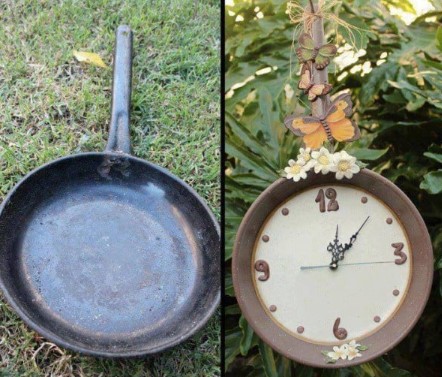
Creating a frying pan wall clock is a fun and inventive DIY project that can add a whimsical touch to your kitchen decor. To make a frying pan wall clock, you’ll need an old frying pan, clock mechanism kit, drill with drill bits, spray paint (optional), and decorative elements like numbers or decals.
Start by removing the handle from the frying pan, if it has one, using a screwdriver. Then, decide on the placement of the clock mechanism on the pan’s surface and mark it with a pencil. Use a drill with the appropriate drill bit to create a hole for the clock mechanism to fit through.
Next, assemble the clock mechanism according to the instructions provided with the kit. Insert the clock hands through the hole in the frying pan and secure them in place with the provided hardware.
If desired, you can spray paint the frying pan in a color that complements your kitchen decor or leave it as is for a rustic look. Once the paint is dry, attach numbers or decorative decals around the edge of the pan to mark the hours.
Finally, install a battery in the clock mechanism and hang your frying pan wall clock in your kitchen or dining area using a sturdy wall hook. Not only does this DIY project repurpose an old frying pan, but it also adds a unique and charming accent to your home decor.
2. Frying Pan Home Décor
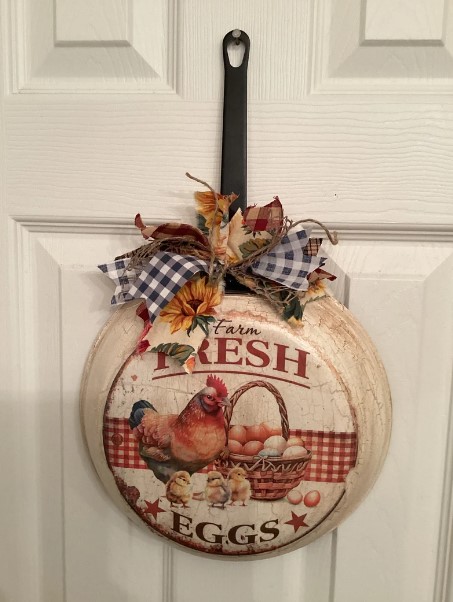
Repurposing an old frying pan into home decor is a creative way to add personality and charm to your space. One idea is to transform the frying pan into a stylish wall or shelf display for your kitchen.
Start by cleaning the pan thoroughly to remove any grease or residue. Then, consider painting the pan with a coat of spray paint in a color that complements your kitchen decor or matches your personal style.
Once the paint is dry, you can get creative with how you use the frying pan in your decor. For example, you could hang the pan on the wall using a sturdy hook and display it as a unique piece of kitchen art.
Alternatively, you could place the pan on a shelf or countertop and use it as a base for arranging small potted plants, herbs, or kitchen utensils. You could even repurpose the pan as a decorative tray for serving snacks or drinks when entertaining guests.
To add an extra touch of flair, consider embellishing the pan with decorative elements like ribbon, fabric, or decals. You could also personalize the pan by adding your initials or a fun quote using paint or vinyl lettering.
No matter how you choose to repurpose your old frying pan, incorporating it into your home decor is sure to make a statement and spark conversation. Plus, it’s a sustainable and budget-friendly way to breathe new life into an old item and add a touch of DIY flair to your space.
3. Frying Pan Plant Pot
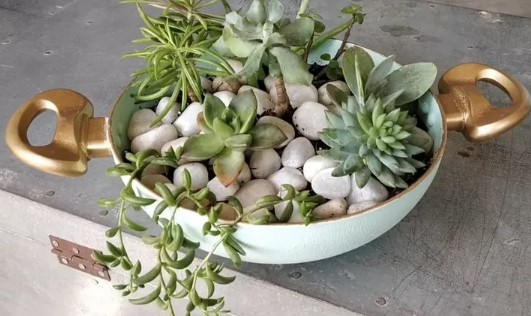
Transforming an old frying pan into a plant pot is a creative and charming DIY project that adds a touch of whimsy to your indoor or outdoor space. To create a frying pan plant pot, start by thoroughly cleaning the pan to remove any grease or residue. Next, choose a plant that suits the size and shape of the pan and select a potting mix appropriate for the plant’s needs.
Once you have your materials ready, line the bottom of the frying pan with small rocks or pebbles to provide drainage for the plant. Then, fill the pan with potting mix, leaving enough room at the top for the plant to fit comfortably. Carefully transplant the plant into the pan, ensuring that the roots are covered with soil and the plant is positioned securely.
To add a decorative touch to your frying pan plant pot, consider painting the pan with outdoor paint in a color or design that complements your home or garden decor. You could also embellish the pan with decorative elements like ribbons, twine, or stenciled designs for added flair.
Once your frying pan plant pot is complete, place it in a sunny spot indoors or outdoors, depending on the needs of the plant. Be sure to water and care for the plant regularly to keep it healthy and thriving in its new home.
Not only does repurposing an old frying pan into a plant pot add a unique and quirky touch to your decor, but it also gives new life to an item that might otherwise end up in the landfill. Plus, it’s a fun and budget-friendly way to showcase your creativity and add a touch of greenery to your space.
Bring Your Pan To A Metal Recycling Center
Bringing your old pan to a metal recycling center is a responsible and eco-friendly way to dispose of it. Metal recycling centers specialize in processing and repurposing various types of metal, including aluminum, stainless steel, and cast iron, which are common materials used in pans.
To bring your pan to a metal recycling center, start by researching facilities in your area that accept household metal items for recycling. You can often find metal recycling centers through online directories, local government websites, or by contacting your municipal waste management department.
Once you’ve identified a suitable recycling center, gather your old pan and any other metal items you’d like to recycle. It’s a good idea to clean the pan beforehand to remove any food residue or grease, as this can make the recycling process more efficient.
When you arrive at the metal recycling center, follow any instructions provided by the staff for dropping off your items. They may have designated bins or areas where you can deposit your metal items for recycling.
After dropping off your old pan, you can feel good knowing that it will be processed and repurposed into new metal products, reducing the need for raw materials and helping to conserve natural resources. Recycling your pan at a metal recycling center is a simple yet impactful way to contribute to environmental sustainability and minimize waste.
Sell It To An Antique Shop Or A Collector
Selling your old pan to an antique shop or collector is a great way to find a new home for your item while potentially earning some extra money. Antique shops and collectors are often interested in vintage or unique kitchenware, including old pans with interesting designs or historical significance.
Before attempting to sell your old pan, it’s a good idea to research its value to get an idea of what it might be worth. Look for similar items online or in antique shops to see what they are selling for. Factors that can affect the value of your pan include its age, condition, material, and any special features or markings.
Once you have an idea of the value of your pan, you can reach out to antique shops or collectors in your area to see if they would be interested in purchasing it. You can also consider listing your pan for sale online on platforms like eBay or Etsy, where you can reach a wider audience of potential buyers.
When selling your old pan, be sure to accurately describe its condition and any notable features or markings. Include clear, high-quality photos of the pan from multiple angles to help attract buyers. Be prepared to negotiate with potential buyers, and consider setting a fair price based on the item’s condition and market value.
Selling your old pan to an antique shop or collector not only gives it a new home but also allows you to pass it on to someone who will appreciate its unique history and craftsmanship. Plus, earning some extra money from the sale can be a nice bonus!
Check Your Manufacturer’s Recycling Program
Checking your manufacturer’s recycling program is a smart and convenient way to dispose of your old pan responsibly. Many manufacturers offer recycling programs for their products, including kitchenware like pans.
These programs are often designed to help consumers dispose of their items in an environmentally friendly manner while also promoting brand loyalty and sustainability.
To check if your pan’s manufacturer has a recycling program, start by visiting their website or contacting their customer service department. Look for information about recycling or sustainability initiatives, as well as any specific guidelines or instructions for recycling their products.
If the manufacturer offers a recycling program for pans, they may provide options for returning the item to them directly or participating in a mail-in recycling program. Some manufacturers may also partner with retailers or recycling facilities to make it easier for consumers to recycle their products.
Before participating in the manufacturer’s recycling program, be sure to follow any specific instructions they provide for preparing your pan for recycling. This may include cleaning the pan, removing any non-metal components, or packaging the item for shipping.
By taking advantage of your pan’s manufacturer’s recycling program, you can ensure that your old pan is disposed of responsibly and recycled into new products, contributing to a more sustainable future. Plus, you’ll have the satisfaction of knowing that you’re supporting environmentally friendly practices and reducing waste.
Frequently Asked Questions (FAQs) – Can You Recycle Frying Pans
Can frying pans be recycled?
Absolutely! While it might not be as straightforward as tossing them in your regular recycling bin, frying pans can definitely find a new life through recycling programs or creative upcycling initiatives.
How can I recycle my old frying pans?
There are a few options available. First, check with your local recycling facilities to see if they accept metal items like frying pans. If they do, simply clean your pan thoroughly and drop it off for recycling. Alternatively, you can explore specialized recycling programs or donate them to organizations that repurpose metal objects.
What are the benefits of recycling frying pans?
Recycling frying pans helps reduce waste and conserves valuable resources like metal. By recycling, you’re contributing to a more sustainable future and supporting the circular economy. Plus, you’re giving your old frying pan a chance to be transformed into something new and useful.
Can damaged or non-stick frying pans still be recycled?
Absolutely! Even if your frying pan is damaged or has a non-stick coating, it can still be recycled. Just make sure to clean it thoroughly before recycling to remove any leftover food residue or oils.
Are there any creative ways to reuse old frying pans if I can’t recycle them?
Definitely! Get creative with your old frying pans by repurposing them into unique decorative pieces, garden planters, or even quirky kitchen accessories. There are endless possibilities for giving your old frying pans a new lease on life.
Will recycling my frying pans make a difference?
Every little bit counts! By recycling your frying pans, you’re contributing to the larger effort of reducing waste and conserving resources. Even small actions like recycling can have a positive impact on the environment and help build a more sustainable future for generations to come.
Can I recycle frying pans with burnt or stubborn food residues?
Absolutely! While it’s ideal to clean your frying pan before recycling, a few burnt or stubborn food residues won’t necessarily disqualify it from being recycled. Simply give it a good scrub to remove as much residue as possible, and then it’s ready to be recycled.
What happens to frying pans after they’re recycled?
After frying pans are recycled, they undergo a process where they’re melted down and transformed into raw metal materials. These materials can then be used to manufacture new products, ranging from other kitchenware items to automotive parts and beyond, giving them a new purpose and extending their lifecycle.
Can I recycle frying pans made of different materials, like stainless steel or cast iron?
Absolutely! Frying pans made of various materials, including stainless steel, cast iron, and aluminum, can all be recycled. Each material has its own recycling process, so it’s important to check with your local recycling facility to ensure they accept the specific type of material your frying pan is made of.
How can I find recycling facilities that accept frying pans in my area?
You can start by contacting your local recycling center or waste management authority to inquire about their policies regarding metal items like frying pans. Additionally, online resources and recycling directories may provide information on specialized recycling programs or drop-off locations specifically for metal objects like frying pans.
Conclusion
In conclusion, while the recycling of frying pans presents unique challenges due to their materials and construction, it is evident that sustainable disposal options do exist.
Initiatives such as specialized recycling programs, refurbishment efforts, and creative upcycling methods demonstrate promising avenues for reducing the environmental impact of discarded frying pans.
However, consumer awareness and participation remain critical in ensuring the success of these endeavors. By making informed choices about the materials used in frying pans, advocating for recycling initiatives, and exploring alternative disposal methods, individuals can contribute to a more sustainable future for both the environment and our communities.